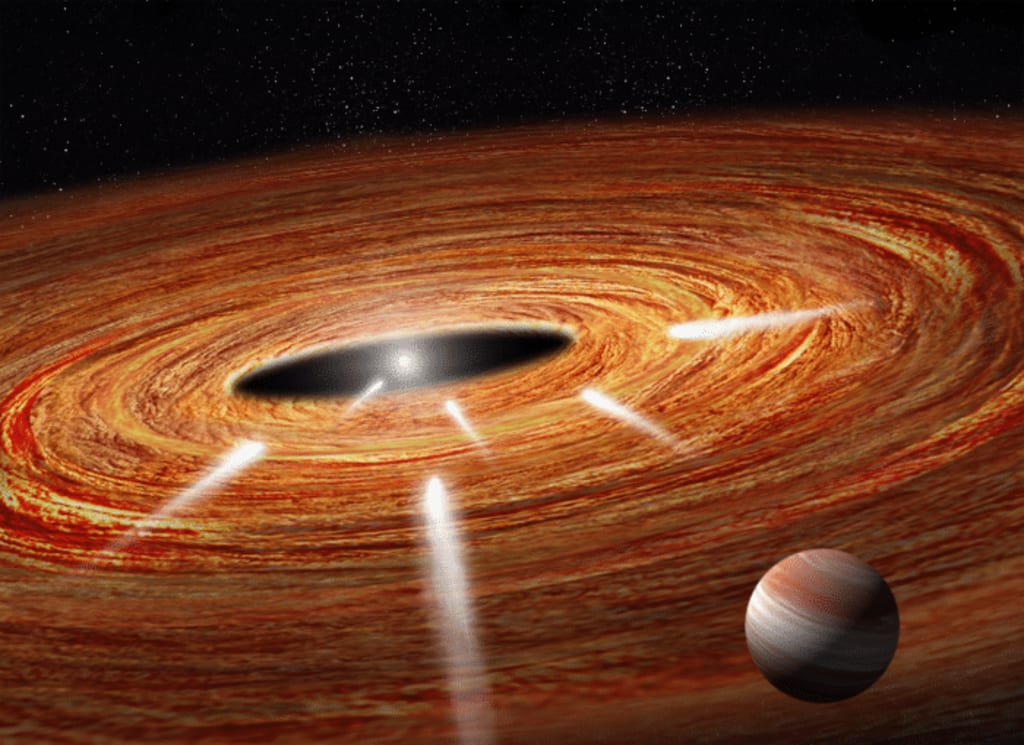The solar system is about to be invaded! A star is approaching us, or causing a comet to threaten Earth
The solar system is about to be invaded!

In the novel "Three-Body Problem", the three-body people know the existence of the earth, invade the solar system on a large scale, and prepare to fight to the death with human beings.
In real life, it seems that no such Trisolaran is about to break into the solar system. The situation may be even more extraordinary, however, as scientists have discovered that a star appears to be approaching the solar system aggressively and is likely to crash into our home in the future.
Our galaxy has a total of 100-400 billion stars. These stars are all orbiting the center of the Milky Way, but each has its own unique orbit. In such a situation, it is normal for two stars that were originally far apart to meet each other.
According to the research of scientists, about 8,000 years ago, a star named WISE J0720-0846AB once passed by the sun, and the closest time was only 1 light-year away. And the gravitational range of the sun is about 1-2 light-years in the range, and it is not an exaggeration to say that it has broken into the solar system.
The Proxima Centauri system, where Trisolaris is located, is also approaching us. It is likely to come within 3 light-years of us in 3000 years, and then miss us and part ways.
However, compared to them, there is a star that is more dangerous. It is rapidly approaching us and may reach a position just 24 light days away in the future. It may not destroy the earth with its own hands, but the "weapons" it brings are enough to make humans tremble with fear.
Let's start with the structure of the solar system.
The center of the solar system is the sun, surrounded by eight planets, the furthest of which is Neptune, which is about 4.5 billion light-years away from the sun. Beyond Neptune's orbit is the Kuiper Belt, a region with a large number of small objects and home to Pluto.
Beyond the Kuiper Belt lies the outermost structure of the solar system, the Oort Cloud. The Oort Cloud is so huge that its furthest point may be 1,000,000,000 AU, or about 1.6 light-years, from the Sun. This is the hometown of long-period comets and also has countless small celestial bodies.
Generally speaking, the orbits of these celestial bodies are relatively stable, and long-period comets can visit the sun once over a very long period of time, and then turn back to the Oort cloud. However, because they are too far away from the sun and their mass is not large enough, these small celestial bodies are easily disturbed by the gravitational force of other celestial bodies, resulting in orbital chaos, or even crashing into
Vadim V. Bobylev, an astronomer at the Galactic Dynamics Laboratory of the Pulkovo Observatory in St. Petersburg, Russia, said: There are many factors that can perturb these small celestial bodies, such as the tidal forces of the Milky Way itself, the giant molecular clouds that are relatively close, and the nearby of stars.
Stellar encounters are rare, and are also affected by the gravitational effects of the star's mass and the distance between them. However, even if it is small, once it happens, the consequences are unimaginable. In the light of things, there is nothing to do, but in the worst case, it will cause the comet to hit the planet, and even more terrifying may even throw the planet out. So scientists have been trying to understand the motions of nearby stars to determine if they could smash into the solar system and wreak havoc on us.
Scientists have been doing this since the 1960s. With the continuous evolution of human observation equipment, our grasp of the motion of these stars has become more and more precise, and a more complete list can be established. Scientists also have more data at their disposal, especially after the launch of the European Space Agency's Gaia satellite. Launched in 2013, the satellite, dedicated to mapping the Milky Way's billion stars, is still in the works.
Bobylev pointed out: In order to judge the motion state of a star, we need to observe it in three dimensions, that is, to obtain the velocities in the three directions of right ascension, declination and radial direction. Using data from the Gaia satellite and its predecessor, the Hipparcos satellite, Bobylev and his colleague Anisa T. Bajkova conducted a study of stars that may appear within 1 parsec (about 3.26 light-years) of the solar system in 5 million years. tidy up.
The duo analyzed the surrounding stars using early data from the third generation of Gaia and three different analysis methods. It was found that the results obtained by these three different methods were relatively similar, and that there are indeed some stars that may come close to the solar system. For example, a star named 510911618569239040 will approach us in about 2.86 million years, and will be only 0.186 light-years away from the sun at its closest.
On top of that, there's a star called Gliese 710 that's even more dangerous. This is an orange dwarf star with 60% the mass of the Sun and is currently about 62 light-years away. Scientists have long noticed the state of Gliese 710's approach. Previous research had suggested that it would arrive just 1.1 light-years from the sun in 1.4 million years.
And Bobylev's analysis this time pointed out that it may have come earlier and closer, after 1.32 million years, it will be only 0.065 light-years away from the sun, which is about 24 light-days away. In conversion, its distance from us is about 615 billion kilometers and 4110 astronomical units, that is, it completely broke into the area of the Oort cloud.
This is very worrying, and its mass is not too small. When it comes to such a close distance, it is bound to make waves in the solar system. Especially the comets of the Oort cloud are likely to be thrown in by it, causing a huge threat to the earth. That is to say, the weapon used by Gliese 710 to "attack" the earth is precisely the "traitor" in our solar system.
They ran simulations of the aftermath of a Gliese 710 invasion, and found that the situation didn't seem as bad as expected. It does cause comets from the Oort Cloud to break into the solar system, with a frequency of about a dozen comets per year. Because of their distance, it would take these comets almost a million years to enter the inner solar system. That is to say, if our descendants lived 2.32 million years ago, they would likely see these comets thrown in by Gliese 710.
Even if it seems unlikely that Gliese 710's intrusion into the solar system will cause Earth to suffer a century of catastrophe, such research is equally important. After all, it is still predicted that with the development of human technology, the understanding of stars is becoming more and more accurate. Maybe there may be a real threatening star invasion in the future, and humans need to plan ahead.
The solar system may seem stable, but it may always be prepared for sudden chaos. After 1.3 million years, it won't harm humans, that's for the best. We also hope that there will be no similar disasters in the far future. Therefore, it is really necessary to always pay attention to the sky above us. Unfounded worry, in today's world, it still seems necessary.
About the Creator
adalberto alejandrina
scientific exploration






Comments
There are no comments for this story
Be the first to respond and start the conversation.